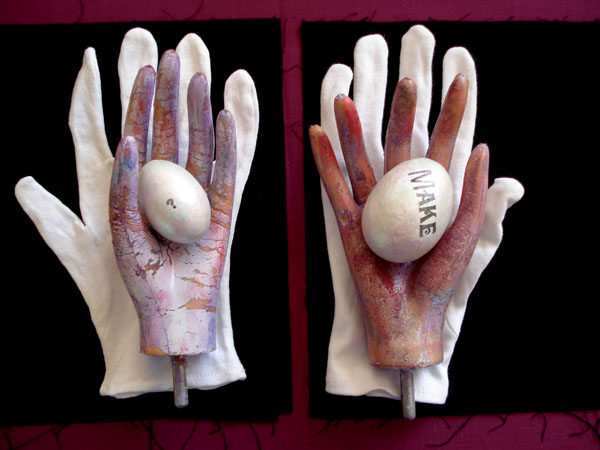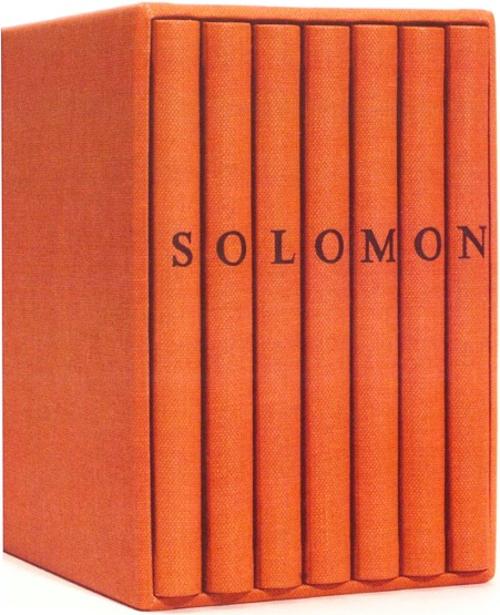
In her artist's statement for the catalogue Ann Newmarch 'deconstructs' the exhibition's title as an –"ti – s & - pA – sh & n. Within that drawn-out phonetic restructuring there's a suggestion of an inner struggle. And a hope that things will turn out all right. In many ways this complex reworking of the exhibition's title reflects both the make-up and the content of the exhibition. Behind every small offering (and this is an exhibition of many offerings), behind the superb craft and humour, one senses that there has been a harrowing inner journey towards renewal.
In his opening talk Jack Cross suggested that the exhibition functioned on three levels: the abstract symbolic; the personal; and the socio-economic.On the abstract symbolic level Cross saw a visual representation of renewal and anticipation through three sets of symbols: the egg, the hand and the pod unfolding, noting that each had a long history in Western culture. At the personal level Cross saw the exhibition as a new beginning and a new phase in the artist's career, one that was full of anticipation He noted Jean Paul Sartre's theory of 'existential despair' that suggests we need to 'go down to the dark night of the soul' before we can again take control of our lives and work our way back to the light and to creativity.
On the socio-economic level Cross noted that people in the arts seem to have the ability to sniff the wind of change and that Newmarch's use of objects from Nature was symbolic of a new global order. These comments are apposite as in a journey through the exhibition these three levels are revealed through works in various mediums expressing a range of themes.
One of the principal themes, that of the phoenix rising, was expressed through small and beautifully crafted 'offerings', often in the form of divided egg shells depicting death and renewal. These intricate objects were often accompanied by printed images (giclee prints) that presented a more subjective take on the object itself. Although listed separately these objects and their associated prints often worked as a unit. Others, such as the print Leap of Faith (also taken from a photograph of one of the objects in the exhibition) worked in its own right and would have benefited from a larger scale to entice the viewer's imagination into the details of the feathers. Indeed, several of the giclee prints would have worked well together as a group in larger formats.
The theme of hands (receiving and/or giving in anticipation?) was expressed through drawings, prints, assemblages and impression sin slumped glass. Interestingly, given the artist's renowned facility with drawing, the photographs of hands reproduced through the giclee process were as compelling in their colour, texture and composition as were the drawings.
In what might be called a 'stepping out' theme many shoe lasts from a closed shoe factory near Newmarch's home were given new meaning, often through the addition of wings or small personal relics from the artist's vast collection of intimate objects. These were touchingly personal and often witty. In fact the collection of shoes could have formed the basis for a separate exhibition.
This was an exhibition that rewarded with time as there was much to keep the viewer intrigued and, in some cases, mystified. However, in an understandable rush to share her renewed enthusiasm for art-making Newmarch may have overcrowded the space, with some works competing with each other for attention. The 'less is more' principle could have been applied and the sixty works reduced to a much smaller number or split into separate exhibitions dealing with the many interrelated themes.
There are apparently hundreds of anticipatory objects and artworks in the Newmarch collection, presenting a rare opportunity for a curator to work with the artist to present a series of potent exhibitions.












